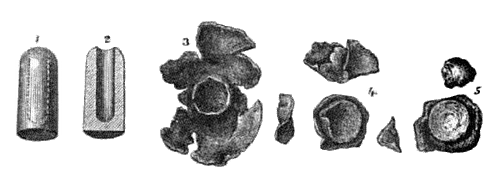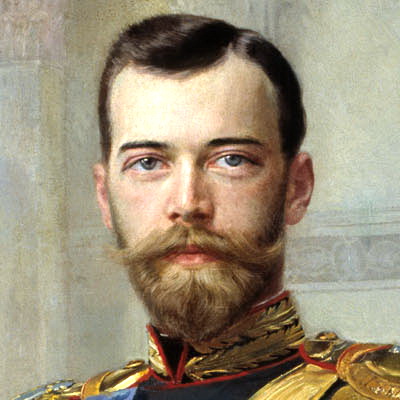|
Dum Dum Arsenal
The Dum Dum Arsenal was a British military facility located near the town of Dum Dum in modern West Bengal, India. The arsenal was at the centre of the Indian Rebellion of 1857, caused in part by rumours that the paper cartridges for their muzzle-loading rifles, which they were expected to bite open, were greased with pig lard (a problem for Muslims) or cow fat (a problem for Hindus). It was at this arsenal that Captain Neville Bertie-Clay developed the .303-inch ''Mark II Special'' cartridge, incorporating the original so-called "Dum-dum bullet", a soft-point bullet designed to mushroom on striking. This was the first in a series of expanding bullet Expanding bullets, also known colloquially as dumdum bullets, are projectiles designed to expand on impact. This causes the bullet to increase in diameter, to combat over-penetration and produce a larger wound, thus dealing more damage to a li ...s developed by the British for military use. They were later banned in warfare by ... [...More Info...] [...Related Items...] OR: [Wikipedia] [Google] [Baidu] |
Dum Dum
Dum Dum is a city and a municipality of Kolkata district in the Indian state of West Bengal. It is a part of Kolkata urban area and also a part of the area covered by Kolkata Metropolitan Development Authority (KMDA). Etymology During the 19th century the area was home to the Dum Dum Arsenal, a British Royal Artillery facility. It was here that, in the early 1890s, Captain Neville Bertie-Clay developed a bullet with the jacket cut away at the tip to reveal its soft lead core (see hollow-point bullet), known informally as a dum-dum or more correctly as an expanding bullet. The previous name of Dum Dum was "Domdoma". History Dum Dum was sparsely populated before the British came. The area was slightly elevated. On 6 February 1757, an accord was signed at Dum Dum by the Nawab of Bengal to allow the British to build forts at Calcutta, Dacca and Kashim Bazar. In 1783 a cantonment was established at Dum Dum. Military barracks were built and civilians started coming in to provide es ... [...More Info...] [...Related Items...] OR: [Wikipedia] [Google] [Baidu] |
West Bengal
West Bengal (, Bengali: ''Poshchim Bongo'', , abbr. WB) is a state in the eastern portion of India. It is situated along the Bay of Bengal, along with a population of over 91 million inhabitants within an area of . West Bengal is the fourth-most populous and thirteenth-largest state by area in India, as well as the eighth-most populous country subdivision of the world. As a part of the Bengal region of the Indian subcontinent, it borders Bangladesh in the east, and Nepal and Bhutan in the north. It also borders the Indian states of Odisha, Jharkhand, Bihar, Sikkim and Assam. The state capital is Kolkata, the third-largest metropolis, and seventh largest city by population in India. West Bengal includes the Darjeeling Himalayan hill region, the Ganges delta, the Rarh region, the coastal Sundarbans and the Bay of Bengal. The state's main ethnic group are the Bengalis, with the Bengali Hindus forming the demographic majority. The area's early history featured a succession ... [...More Info...] [...Related Items...] OR: [Wikipedia] [Google] [Baidu] |
India
India, officially the Republic of India (Hindi: ), is a country in South Asia. It is the seventh-largest country by area, the second-most populous country, and the most populous democracy in the world. Bounded by the Indian Ocean on the south, the Arabian Sea on the southwest, and the Bay of Bengal on the southeast, it shares land borders with Pakistan to the west; China, Nepal, and Bhutan to the north; and Bangladesh and Myanmar to the east. In the Indian Ocean, India is in the vicinity of Sri Lanka and the Maldives; its Andaman and Nicobar Islands share a maritime border with Thailand, Myanmar, and Indonesia. Modern humans arrived on the Indian subcontinent from Africa no later than 55,000 years ago., "Y-Chromosome and Mt-DNA data support the colonization of South Asia by modern humans originating in Africa. ... Coalescence dates for most non-European populations average to between 73–55 ka.", "Modern human beings—''Homo sapiens''—originated in Africa. Then, int ... [...More Info...] [...Related Items...] OR: [Wikipedia] [Google] [Baidu] |
Neville Bertie-Clay
Lt.-Col. Neville Sneyd Bertie-Clay (22 July 1864 – 17 October 1938) was a British army officer. He served in the Royal Artillery and in the Royal Garrison Artillery, but spent much of his career on secondment to the Indian Ordnance Department of the Indian Army. Bertie-Clay invented the dum dum soft pointed bullet in 1896 as the Mark II Lee-Metford bullet then in use was perceived to leave a small wound with insufficient stopping power to halt a determined charge. The dum dum would later be outlawed for use in warfare by the Hague Convention of 1899 but remains in use for police firearms and hunting. Army career Bertie-Clay was born in Chhindwara to Maj.-Gen. Edward Bertie Clay of the Bengal Staff Corps and Sarah Maria (''née'' Attwood). His great-grandfather was Rear Admiral Edward Sneyd Clay (1768–1846). He served as an officer in the British Army from at least 6 June 1887 when, as a Lieutenant in the Royal Artillery, he was seconded to the Indian Ordnance Department of ... [...More Info...] [...Related Items...] OR: [Wikipedia] [Google] [Baidu] |
The New York Times
''The New York Times'' (''the Times'', ''NYT'', or the Gray Lady) is a daily newspaper based in New York City with a worldwide readership reported in 2020 to comprise a declining 840,000 paid print subscribers, and a growing 6 million paid digital subscribers. It also is a producer of popular podcasts such as '' The Daily''. Founded in 1851 by Henry Jarvis Raymond and George Jones, it was initially published by Raymond, Jones & Company. The ''Times'' has won 132 Pulitzer Prizes, the most of any newspaper, and has long been regarded as a national " newspaper of record". For print it is ranked 18th in the world by circulation and 3rd in the U.S. The paper is owned by the New York Times Company, which is publicly traded. It has been governed by the Sulzberger family since 1896, through a dual-class share structure after its shares became publicly traded. A. G. Sulzberger, the paper's publisher and the company's chairman, is the fifth generation of the family to head the pa ... [...More Info...] [...Related Items...] OR: [Wikipedia] [Google] [Baidu] |
Indian Rebellion Of 1857
The Indian Rebellion of 1857 was a major uprising in India in 1857–58 against the rule of the British East India Company, which functioned as a sovereign power on behalf of the British Crown. The rebellion began on 10 May 1857 in the form of a mutiny of sepoys of the Company's army in the garrison town of Meerut, northeast of Delhi. It then erupted into other mutinies and civilian rebellions chiefly in the upper Gangetic plain and central India, though incidents of revolt also occurred farther north and east. The rebellion posed a considerable threat to British power in that region, and was contained only with the rebels' defeat in Gwalior on 20 June 1858., , and On 1 November 1858, the British granted amnesty to all rebels not involved in murder, though they did not declare the hostilities to have formally ended until 8 July 1859. Its name is contested, and it is variously described as the Sepoy Mutiny, the Indian Mutiny, the Great Rebellion, the Revolt of 1857, ... [...More Info...] [...Related Items...] OR: [Wikipedia] [Google] [Baidu] |
Paper Cartridge
A paper cartridge is one of various types of small arms ammunition used before the advent of the metallic cartridge. These cartridges consisted of a paper cylinder or cone containing the bullet, gunpowder, and in some cases, a primer or a lubricating and anti-fouling agent. Combustible cartridges are paper cartridges that use paper treated with oxidizers to allow them to burn completely upon ignition. History Paper cartridges have been in use for nearly as long as hand-held firearms, with a number of sources dating their use back to the late 14th century. Historians note their use by soldiers of Christian I in 1586, while the Dresden museum has evidence dating their use to 1591, and Capo Bianco writes in 1597 that paper cartridges had long been in use by Neapolitan soldiers. Their use became widespread by the 17th century. The first army to officially use paper cartridges is presumed to be "piechota wybraniecka" of Poland under the rule of Stephen Báthory. Cultural impact Pa ... [...More Info...] [...Related Items...] OR: [Wikipedia] [Google] [Baidu] |
Soft-point Bullet
A soft-point bullet (SP), also known as a soft-nosed bullet, is a jacketed expanding bullet with a soft metal core enclosed by a stronger metal jacket left open at the forward tip. A soft-point bullet is intended to expand upon striking flesh to cause a wound diameter greater than the bullet diameter. Jacketed soft point bullets are usually abbreviated ''JSP'' in the ammunition and reloading industry. Evolution Lead-alloy bullets used with gunpowder firearms were unsatisfactory at the bullet velocities available from rifles loaded with nitrocellulose propellants such as cordite. By the late 19th century, lead-alloy bullets were being enclosed within a jacket of stronger mild steel or copper alloyed with nickel or zinc to reliably impart stabilizing rotation in rifled barrels. The lead-alloy core was swaged into a cup of the stronger metal covering the front and sides of the core, but leaving some of the core exposed on the base of the bullet. The bullet jacket may be described ... [...More Info...] [...Related Items...] OR: [Wikipedia] [Google] [Baidu] |
Expanding Bullet
Expanding bullets, also known colloquially as dumdum bullets, are projectiles designed to expand on impact. This causes the bullet to increase in diameter, to combat over-penetration and produce a larger wound, thus dealing more damage to a living target. For this reason, they are used for hunting and by most police departments, but are generally prohibited for use in war. Two typical designs are the hollow-point bullet and the soft-point bullet. Function and use Expanding bullets are designed to expand on impact, sometimes as much as twice the diameter. This will slow the bullet down and more of its kinetic energy will be transferred to the target, creating a larger wound channel. For this reason expanding bullets are often used in hunting because their stopping power increases the chance of a quick kill. There are a number of designs used for hunting different game and for use in weapons with different muzzle velocities. Bullets used for medium and large game need better ... [...More Info...] [...Related Items...] OR: [Wikipedia] [Google] [Baidu] |
Hague Conventions (1899 And 1907)
The Hague Conventions of 1899 and 1907 are a series of international treaties and declarations negotiated at two international peace conferences at The Hague in the Netherlands. Along with the Geneva Conventions, the Hague Conventions were among the first formal statements of the laws of war and war crimes in the body of secular international law. A third conference was planned for 1914 and later rescheduled for 1915, but it did not take place because of the start of World War I. History The Hague Conventions of 1899 and 1907 were the first multilateral treaties that addressed the conduct of warfare and were largely based on the Lieber Code, which was signed and issued by US President Abraham Lincoln to the Union Forces of the United States on 24 April 1863, during the American Civil War. The Lieber Code was the first official comprehensive codified law that set out regulations for behavior in times of martial law; protection of civilians and civilian property and punishment of ... [...More Info...] [...Related Items...] OR: [Wikipedia] [Google] [Baidu] |
Military Industrial Facilities Of The United Kingdom
A military, also known collectively as armed forces, is a heavily armed, highly organized force primarily intended for warfare. It is typically authorized and maintained by a sovereign state, with its members identifiable by their distinct military uniform. It may consist of one or more military branches such as an army, navy, air force, space force, marines, or coast guard. The main task of the military is usually defined as defence of the state and its interests against external armed threats. In broad usage, the terms ''armed forces'' and ''military'' are often treated as synonymous, although in technical usage a distinction is sometimes made in which a country's armed forces may include both its military and other paramilitary forces. There are various forms of irregular military forces, not belonging to a recognized state; though they share many attributes with regular military forces, they are less often referred to as simply ''military''. A nation's military may f ... [...More Info...] [...Related Items...] OR: [Wikipedia] [Google] [Baidu] |
Bengal Presidency
The Bengal Presidency, officially the Presidency of Fort William and later Bengal Province, was a subdivision of the British Empire in India. At the height of its territorial jurisdiction, it covered large parts of what is now South Asia and Southeast Asia. Bengal proper covered the ethno-linguistic region of Bengal (present-day Bangladesh and the Indian state of West Bengal). Calcutta, the city which grew around Fort William, was the capital of the Bengal Presidency. For many years, the Governor of Bengal was concurrently the Viceroy of India and Calcutta was the de facto capital of India until 1911. The Bengal Presidency emerged from trading posts established in Mughal Bengal during the reign of Emperor Jahangir in 1612. The East India Company (HEIC), a British monopoly with a Royal Charter, competed with other European companies to gain influence in Bengal. After the decisive overthrow of the Nawab of Bengal in 1757 and the Battle of Buxar in 1764, the HEIC expanded ... [...More Info...] [...Related Items...] OR: [Wikipedia] [Google] [Baidu] |
.png)





